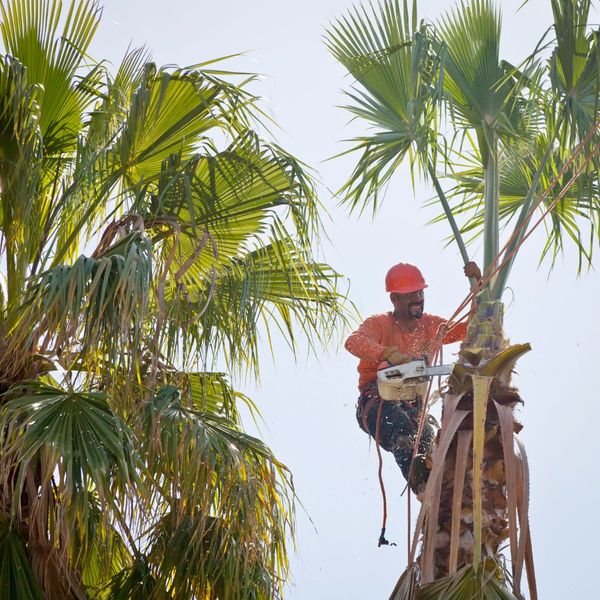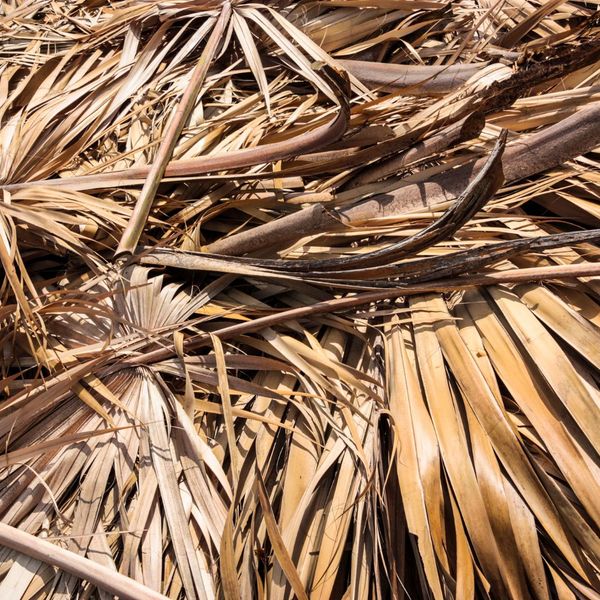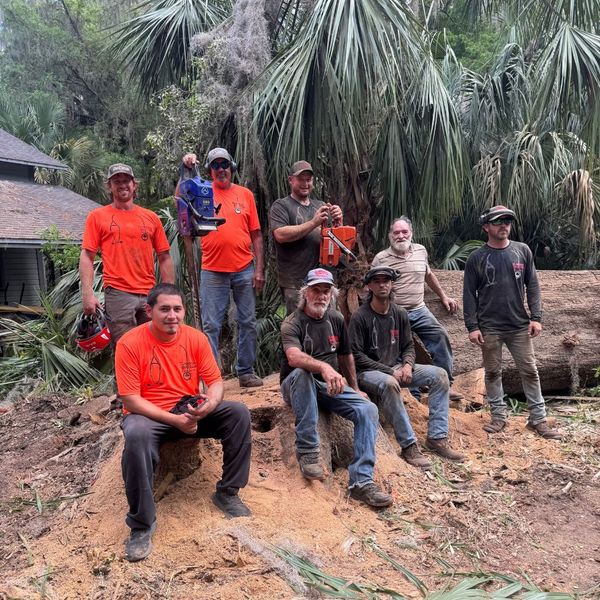Learn how to trim palm trees in Florida with our expert tips! Discover the best techniques, timing, and safety practices for healthy palms in Gainesville, FL. Call us for professional tree care!
How to Trim Palm Trees in Florida
The Wood Doctor

Trimming Palm Trees in Florida: Everything You Need to Know
Wondering how to trim palm trees in Florida? Proper palm tree trimming is essential for maintaining their health and beauty, especially in Gainesville, FL’s unique climate. In this guide, we’ll share expert tips on the best techniques, ideal timing, and safety precautions to keep your palm trees thriving. Whether you’re a homeowner or seeking professional tree care, learn how to trim palm trees in Florida correctly!
Palm trees are practically Florida’s mascot—those swaying fronds scream Sunshine State. But keeping them looking sharp and healthy takes more than just a pair of clippers and good intentions. Trimming palm trees in Florida isn’t just about aesthetics; it’s about promoting growth, preventing pests, and ensuring safety, especially in Gainesville, where storms can turn overgrown fronds into flying hazards. As a local tree service in Gainesville, FL, we’ve trimmed countless palms and learned what works (and what doesn’t).
So, grab a lemonade, and let’s dive into everything you need to know about how to trim palm trees in Florida—from timing to tools to when it’s time to call in the pros.

Why Trim Palm Trees in Florida?
Before we get into the how-to, let’s talk about why trimming palm trees matters. In Florida’s humid, storm-prone climate, untrimmed palms can become a mess—or worse, a liability. Here’s why regular trimming is a must:
Health: Removing dead, yellowing, or brown fronds (the leafy parts) helps the tree focus energy on new growth. It also reduces the risk of fungal infections, which love Florida’s muggy weather.
Safety: Loose fronds can fall during storms, damaging property or injuring someone. In Gainesville, where summer squalls and occasional hurricanes roll through, this is a big deal.
Pest Prevention: Overgrown or dead fronds attract pests like palmetto bugs and rodents, which can nest in the mess. Trimming keeps these critters at bay.
Looks: Let’s be honest—trimmed palms look way better. A tidy palm boosts your property’s curb appeal, whether it’s a majestic Mexican Fan palm or a classic cabbage palm.
Now that we know why it’s important, let’s get to the nitty-gritty of how to trim palm trees in Florida safely and effectively.

When’s the Best Time to Trim Palm Trees in Florida?
Timing is everything when it comes to trimming palm trees. In Florida, the best time to trim is late spring to early summer—think May through June. Here’s why:
Growth Cycle: Palms are in their active growing phase during this period, so trimming encourages healthy new fronds.
Storm Prep: Trimming before hurricane season (June to November) reduces the risk of loose fronds becoming dangerous debris. In Gainesville, where storms can pop up fast, this is critical.
Milder Weather: Spring and early summer are less brutally hot than July or August, making it easier to work outdoors.
Avoid trimming in late fall or winter (November to February). Palms slow down their growth during cooler months, and cutting fronds then can stress the tree. Also, don’t trim right after a storm unless it’s an emergency—wet fronds are heavier and harder to handle safely.
Pro tip: Only trim fronds that are completely brown, yellow, or hanging below the “9-to-3” line (imagine a clock face on the palm’s canopy). Over-trimming, or “hurricane cutting,” where too many green fronds are removed, can weaken the tree and make it look like a sad pencil. Stick to what’s necessary.
Tools You’ll Need to Trim Palm Trees
Trimming palm trees isn’t a job for your kitchen scissors. Here’s what you’ll need to do it right:
Pruning Shears: For small fronds or thin branches. Look for sharp, bypass-style shears for clean cuts.
Lopping Shears: For thicker fronds or small branches, these have longer handles for extra leverage.
Pole Saw: For tall palms, a pole saw (manual or gas-powered) lets you reach high fronds without a ladder. Safety first!
Ladder (if needed): Use a sturdy, non-slip ladder for medium-height palms, but only if you’re experienced. Tall palms are best left to pros.
Gloves and Safety Glasses: Palm fronds can be sharp, and debris can fly. Protect your hands and eyes.
Tarp or Wheelbarrow: To collect fronds and keep cleanup easy.
Sanitize your tools with rubbing alcohol or a bleach solution before and after use to prevent spreading diseases between trees. Nobody wants a sick palm!
**Disclaimer: Our DIY tips are for educational purposes only. Trimming a palm tree yourself is highly dangerous, and we recommend calling a professional tree trimming service.
Step-by-Step Guide: How to Trim Palm Trees in Florida
Ready to tackle your palm tree? Follow these steps to trim like a pro:
1. Assess the Tree
Walk around the palm and identify which fronds need to go. Look for:
Dead or brown fronds.
Yellowing fronds that are mostly dead.
Fronds hanging below the horizontal line (the “9-to-3” rule).
Seed pods or fruit clusters (common on palms like queen palms) can be heavy and messy.
Don’t cut green, healthy fronds—they’re still feeding the tree.
2. Set Up Safely
Place a tarp under the tree to catch debris. If using a ladder, ensure it’s on flat ground and have someone spot you. For tall palms, a pole saw or professional help is safer. Wear gloves, glasses, and sturdy shoes—flip-flops won’t cut it.
3. Start Trimming
Small Palms: Use pruning or lopping shears to cut fronds close to the trunk, leaving about an inch to avoid damaging the bark. Cut at a slight angle to prevent water pooling.
Tall Palms: Use a pole saw to reach high fronds. Work slowly and let the frond’s weight guide the cut. Avoid tearing the bark, as this can invite pests or disease.
Seed Pods/Fruit: Remove these with shears or a saw, as they can attract pests and make a mess.
Work from the bottom up to avoid fronds getting tangled. If a frond is too heavy, cut it in sections to control the fall.
4. Clean Up
Collect fronds and debris on the tarp and haul them to a compost pile or green waste bin. In Gainesville, check local regulations for yard waste pickup—some areas have specific rules for palm fronds.
5. Inspect the Tree
After trimming, check the palm for signs of stress, like cracks in the trunk or oozing sap. If you spot anything funky, call an arborist in Gainesville, FL, for a health check.
Common Mistakes to Avoid
Trimming palm trees sounds simple, but it’s easy to mess up. Here are some pitfalls to steer clear of:
Over-Trimming: Cutting green fronds or trimming above the “9-to-3” line can starve the tree of nutrients. Less is more.
Ignoring Safety: Climbing tall palms without proper gear or training is a recipe for disaster. When in doubt, hire a pro.
Dirty Tools: Unclean tools can spread diseases like fusarium wilt, which is deadly to palms.
Trimming at the Wrong Time: Winter trimming or cutting during a palm’s dormant phase can weaken it.
When to Call a Professional Tree Service in Gainesville, FL
While small palms are more DIY-friendly, taller or trickier trees are best left to experts. Here’s when to pick up the phone:
Height: Palms over 15 feet tall require specialized equipment like bucket trucks or climbing gear.
Storm Damage: Broken or hanging fronds after a storm need quick, safe removal.
Health Issues: If your palm looks sickly (discolored fronds, leaning trunk), an arborist can diagnose and treat it.
Time and Effort: Let’s face it—trimming is sweaty work. A professional tree service in Gainesville, FL, can handle it faster and cleaner.
At our Gainesville tree service, we use certified arborists and top-notch equipment to trim palms safely and efficiently. Plus, we know Florida’s palm species inside out, from sabals to Washingtonians.
Palm Tree Trimming and Local Regulations
In Gainesville, FL, you might need a permit to trim or remove certain palm trees, especially if they’re on public property or part of a protected species. Check with the City of Gainesville’s Urban Forestry Division before starting work.
Some HOAs also have rules about palm trimming, so double-check with your neighborhood association. A local tree service can help navigate these regulations and ensure compliance.
